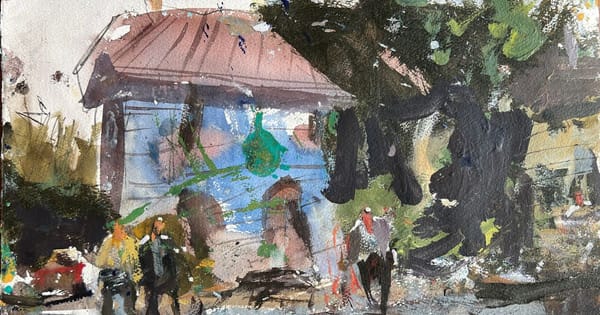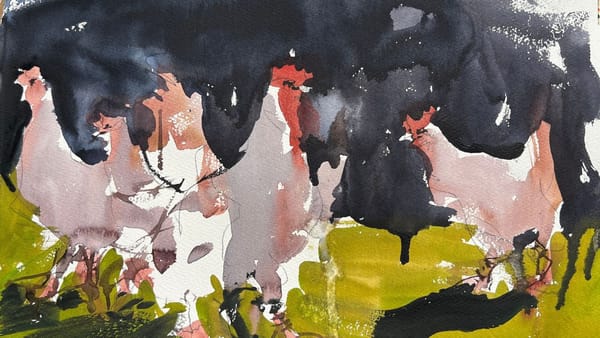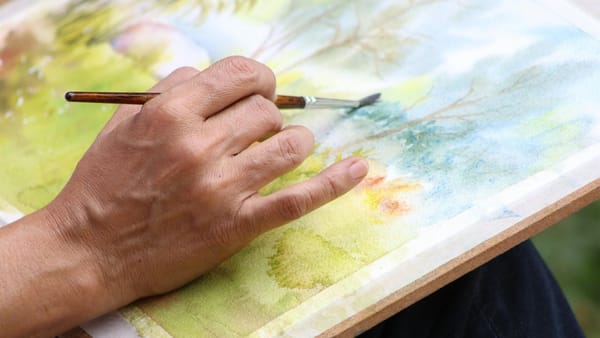Improve Your Drawing with Contour and Blind Contour Exercise
Instantly improve your drawing with contour and blind contour exercises. Designed to help you capture a raw, uninhibited connection to subjects.
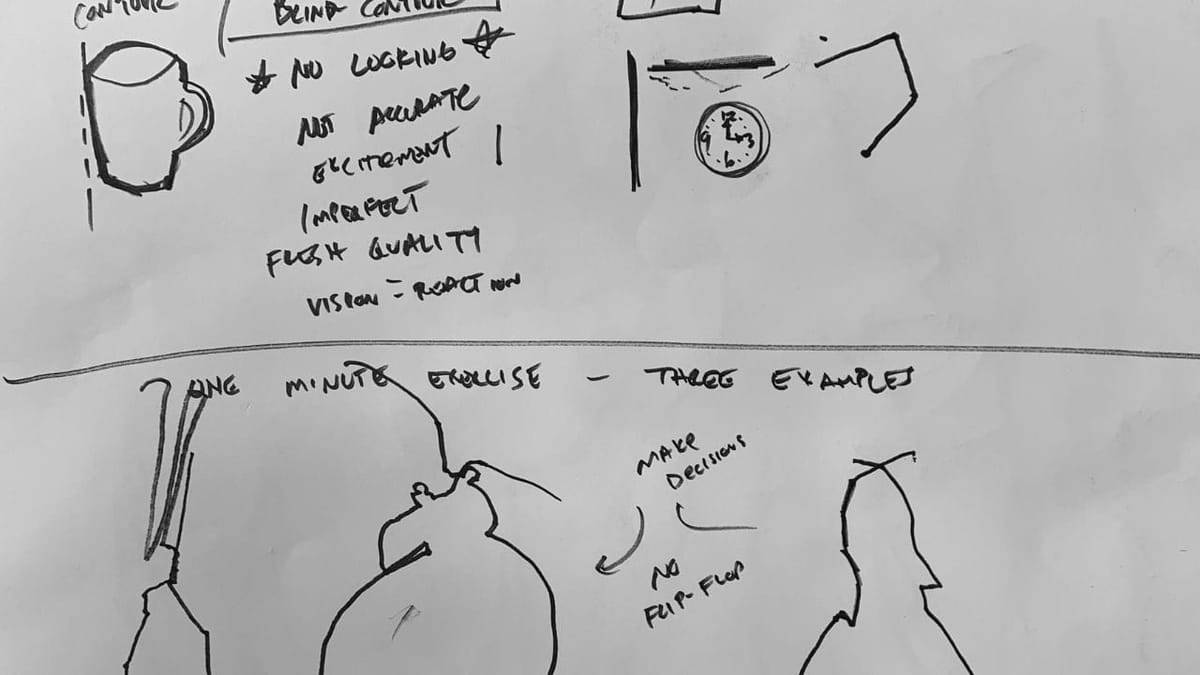
In this tutorial, we’ll delve into the concepts of contour drawing and blind contour drawing – two techniques that are excellent for developing your observation skills and building a strong foundation for more advanced artwork.
Drawing is an art form that allows us to capture the beauty and intricacies of the world around us. If you’re a beginner looking to enhance your drawing skills, then mastering the fundamentals is crucial.
video demo
Mastering the Basics: Beginner Drawing Tutorial with Contour and Blind Contour Exercises
Let’s kick things off by familiarizing ourselves with these drawing techniques and understanding the potential rewards they offer through a small time commitment.
What is Contour Drawing?
Contour drawing is a technique that involves outlining the edges of an object to create a two-dimensional representation of its form. Instead of focusing on shading or details, contour drawing emphasizes the overall shape and structure of the subject. This technique encourages careful observation and helps you capture the essential lines that define an object.
Basic Drawing and Observation Tips
Before diving into contour and blind contour drawing exercises, here are some basic tips to keep in mind:
- Start with Simple Subjects: Begin with uncomplicated objects like fruits, cups, or stationary items. These objects have clear shapes and will help you practice the fundamentals effectively.
- Use Light Lines: When doing contour drawings, use light and delicate lines. This will allow you to make adjustments easily as you refine the outlines.
- Focus on Negative Space: Pay attention to the negative space – the area around the object. This will aid in accurately depicting proportions and relationships between different parts of the subject.
- Observe Carefully: Spend time studying the object before you start drawing. Notice the angles, curves, and connections between different parts.
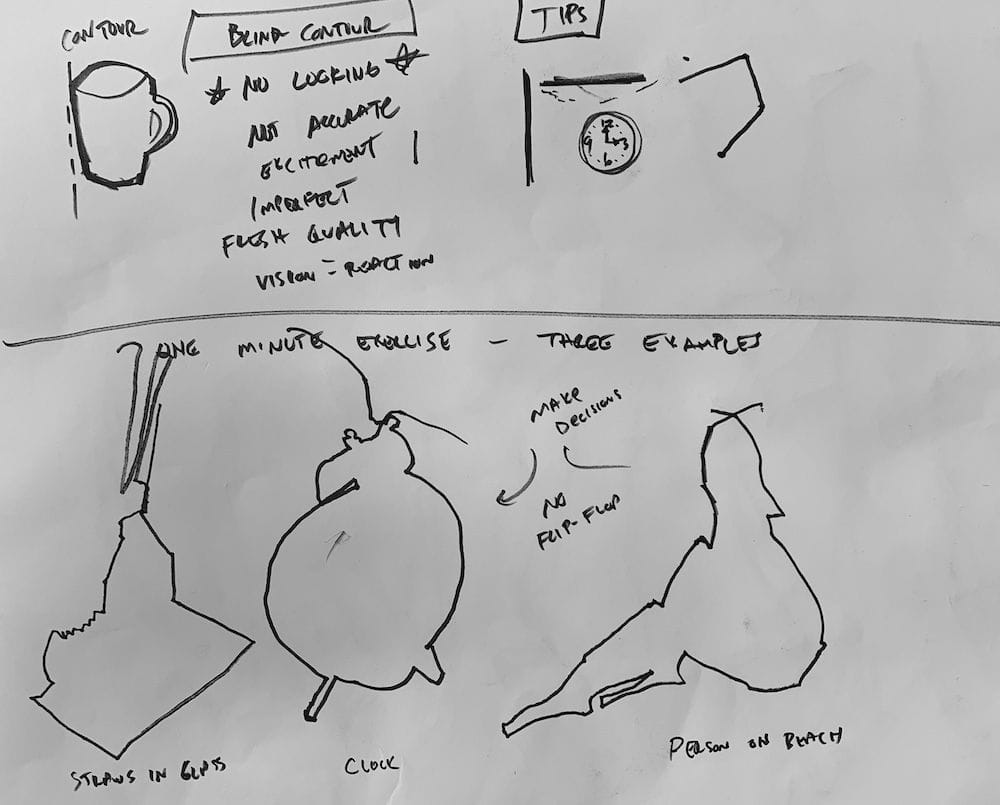
Why Practice Contour Drawing?
Contour drawing might seem simple, but it offers numerous benefits that are essential for any artist’s growth:
- Improved Observation: By carefully observing the subject’s details and relationships, you train your eye to see nuances that often go unnoticed.
- Enhanced Hand-Eye Coordination: Contour drawing requires your hand to follow your eyes’ movement. This enhances your hand-eye coordination and fine motor skills.
- Understanding Form: Through contour drawing, you develop a deeper understanding of how three-dimensional objects translate onto a two-dimensional surface.
Blind Contour Drawing: A New Perspective
Now, let’s step it up a notch and explore blind contour drawing. This technique involves drawing the contours of an object without looking down at your paper. This might sound counterintuitive, but blind contour drawing offers unique advantages:
- Heightened Observation: By focusing solely on the subject and not on your drawing, you become more attuned to the object’s details and subtleties.
- Strengthened Visual Sensitivity: Blind contour drawing forces you to rely on your visual perception, encouraging you to truly see the object rather than rely on preconceived notions.
The Timed Exercise: Drawing with Instinct
To truly challenge yourself and develop a more instinctive approach to drawing, try this timed exercise:
Step 1: Choose a set of simple objects arranged in front of you.
Step 2: Set a timer for a short period, such as 1-2 minutes.
Step 3: Begin drawing the contours of the objects without looking at your paper, focusing entirely on the subject.
Step 4: When the timer goes off, stop drawing.
Step 5: Compare your drawings to the actual objects. You’ll likely find that your drawings have an energetic and spontaneous quality.
This timed exercise pushes you to trust your instincts and improves your ability to quickly observe and translate your observations onto paper.
Conclusion
In the world of art, mastering the basics is essential for building a strong foundation. Contour and blind contour drawing exercises are fantastic tools for honing your observation skills and gaining a deeper understanding of form.
By practicing these techniques and engaging in timed exercises, you’ll become more visually sensitive and confident in your drawing abilities. Remember, the journey of an artist is marked by consistent practice and a willingness to embrace new challenges. So, grab your pen, find some objects, and embark on this exciting artistic journey!
